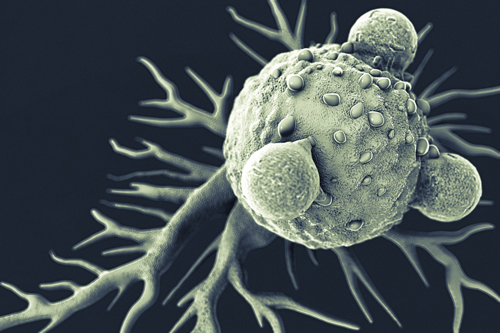In the manufacturing facility the CAR structure is synthesized using the patient’s own T-cells. The CAR is a fusion protein that contains 3 distinct functional domains. For example, with axicabtagene ciloleucel (KTE-C19):
- The extracellular domain is an antibody fragment that elicits signals to activate the engineered T cells to recognize and bind to target antigens (i.e., CD19) on the surface of the cancer cell. The single chain antibody for KTE-C19 is known as FMC-63.
- The intracelluar components called the essential activation domain (CD3) – signal 1 – and the costimulatory domain – signal 2 – provide signals that allow the CAR T-cells to activate, proliferate and survive. Signal 1 and signal 2 have a synergistic effect, leading to tumor cell apoptosis.
- The CAR-T cells then circulate throughout the body to kill cancer cells, including those that have metastasized.
Many different tumor antigen targets are under research; however, the most common antigen that has been targeted in lymphoma and leukemia trials is known as “cluster of differentiation 19” (CD19).
CD19 is expressed on the surface of most B cells, both healthy and cancerous. However, CD19 is not present on other healthy cells and the CAR T construct does not target these cells. However, healthy B-cells are targeted by the CAR T therapy and leads to B-cell aplasia which is managed by regular immunoglobulin replacement.
Other tumor targets under study include CD20 and CD22.



